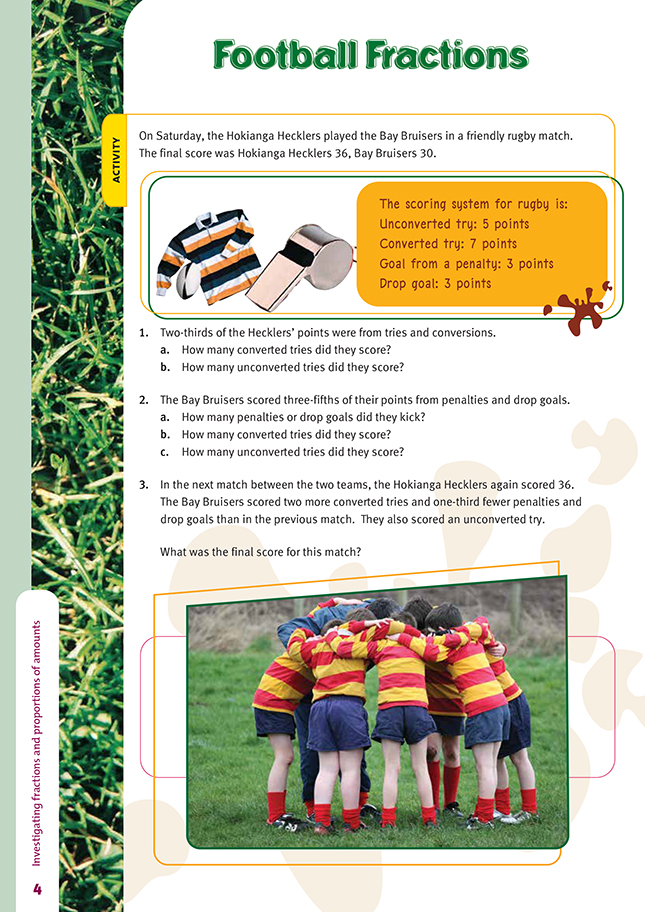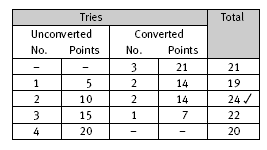This is a level 4 number link activity from the Figure It Out series. It relates to Stage 7 of the Number Framework.
A PDF of the student activity is included.
Click on the image to enlarge it. Click again to close. Download PDF (652 KB)
solve problems that involve finding fractions of a whole number
FIO, Link, Number, Book Three, Football Fractions, page 4
This activity challenges the students to use a variety of skills and strategies. First, they need to find fractions of amounts, and then they have to use basic multiplication facts, algebraic thinking, and problem-solving strategies to find out how many points were from converted and unconverted tries, penalties, and drop goals.
Students at this level should have several strategies for finding fractions of amounts. For example, to find two-thirds of the Hecklers’ score, they could divide 36 by 3 and then multiply the result by 2. Or to find three-fifths of the Bruisers’ score, they might convert three-fifths to 0.6 and then multiply 30 by 0.6.
For question 1, they’ll find that two-thirds of 36 is 24. This is made up of converted tries (seven points each) and unconverted tries (five points each). So the students need to work out what combination of sevens and fives will make 24. They will probably do this using trial and improvement. If there is one converted try (worth
seven points), the remaining 17 points must come from unconverted tries (worth five points each). Five does not divide evenly into 17, so this can’t be the answer. If there are two converted tries (2 x 7 = 14), the remaining 10 points can come from two unconverted tries (2 x 5 = 10). Two converted and two unconverted tries gives the correct answer. The students will find that there are no other correct answers.
A table is a useful way of recording trial and improvement.
They can use similar strategies to answer questions 2 and 3.
Answers to Activity
1. a. 2
b. 2
2. a. 6
b. 1
c. 1
3. Bay Bruisers 38, Hokianga Hecklers 36

